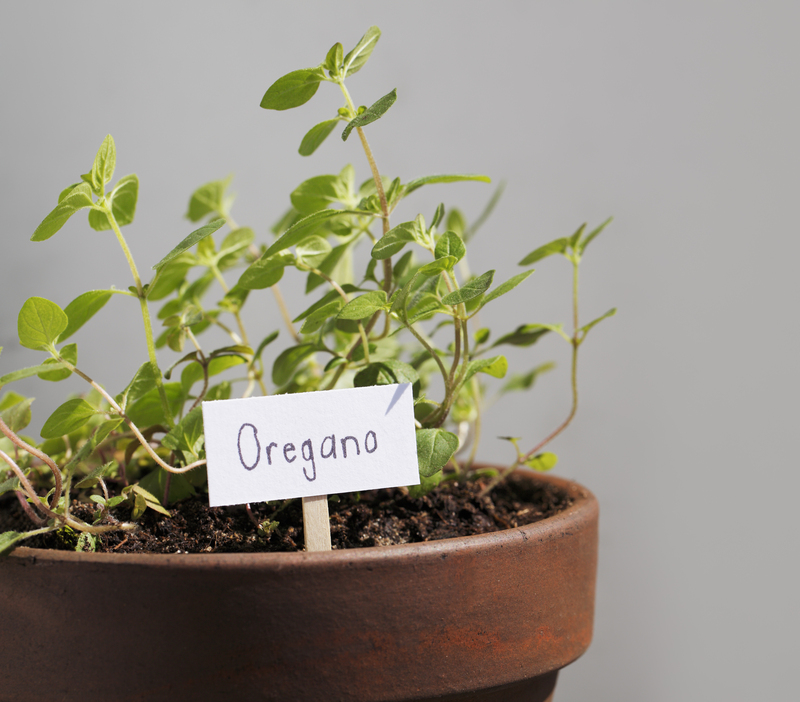Batten Down the Hatches: Garden Tips for Storms
Posted on 27/09/2025
Batten Down the Hatches: Garden Tips for Storms
Every gardener knows that Mother Nature can be both a friend and a fierce adversary. While spring showers bring much-needed moisture, the thunderstorms, gales, and sudden downpours of storm season can turn garden dreams into disaster overnight. In this comprehensive guide, we show you how to prepare, protect, and restore your green space before, during, and after severe weather. If you're seeking the best advice to storm-proof your garden, read on and equip yourself with expert strategies for safeguarding your botanical pride and joy.
Understanding Why Gardens Need Storm Protection
Storms present a range of threats to gardens. From intense wind gusts and torrential rains to hail and flying debris, your plants face numerous hazards during extreme weather events. Wind can snap stems and topple trees, pounding rain can erode soil, and hail can shred leaves. These destructive forces not only damage the appearance of your garden but threaten its health and productivity.
- Soil Erosion and Waterlogging: Heavy rain can wash away topsoil and nutrients essential for healthy plants.
- Wind Damage: Strong gusts break branches, uproot young plants, and topple structures like trellises or greenhouses.
- Hail Impact: Even small hailstones can rip holes in leaves or bruise stems.
- Flooding: Excess water can lead to root rot and suffocation.
- Flying Debris: Unsecured garden tools and decorations can become projectiles that hurt plants and even people.
To reduce the risk of storm damage, smart preparation is key. The following tips on garden storm protection will help you stay ready for whatever the weather throws your way.

How to Prepare Your Garden for an Approaching Storm
1. Monitor Weather Forecasts Regularly
Stay up to date with your local weather service, especially during storm seasons. Advance warning of a severe weather event gives you vital time to get ready and minimize damage.
2. Secure Loose Items
- Move lightweight furniture, pots, and tools indoors or to a sheltered location.
- Stake and tie down any trellises, arches, or vertical structures.
- Store garden decorations and ornaments securely.
Loose objects can become dangerous projectiles in high winds, so always batten down the hatches when you hear a storm is coming.
3. Prune Vulnerable Plants and Trees
- Remove dead or weak branches that could snap off in the wind.
- Thin out dense canopies to reduce wind resistance and prevent limb breakage.
- Trim back trees near your house, greenhouses, or sheds.
Regular pruning not only benefits plant health but reduces the risk of storm damage significantly.
4. Protect Delicate Plants
- Move potted plants inside or into a garage or shed.
- Use cloches, buckets, or upturned pots to cover fragile flowers and vegetables.
- Group container plants in a sheltered corner or against a wall for added protection.
Covering and relocating plants can make the difference between survival and destruction during extreme weather.
5. Check and Strengthen Garden Infrastructure
- Tighten all bolts and supports on fences, gates, and trellises.
- Reinforce greenhouses and cold frames to prevent panels blowing out.
- Install bracing for young trees with stakes and soft ties.
6. Prepare for Flooding
- If your garden is prone to pooling, improve drainage by digging temporary trenches or adding sandbags.
- Elevate planters and pots on bricks to prevent waterlogging.
- Clear gutters and downspouts to direct heavy rain away from plant beds and foundations.
Garden Storm Preparedness: Extra Tips for Specific Storm Types
Wind Protection Strategies
- Install windbreaks such as hedges or lattice screens to shield beds from prevailing gusts.
- Plant in dense groups to help plants support each other and reduce overall vulnerability.
- Mulch around the base of plants to protect roots from soil erosion.
Heavy Rainstorm Defenses
- Build raised beds to improve excess water runoff.
- Add organic mulch to retain soil structure and slow down rain impact.
- Plant groundcovers or low-growing plants to anchor soil and reduce erosion.
Hailstorm Preparation
- Use hail netting or row covers to physically shield vegetables and flowers.
- Cover individual plants with buckets or dedicated plant cloches when hail is imminent.
- Install a temporary tarpaulin over delicate garden crops during short, intense hailstorms.
What to Do During the Storm: Immediate Actions
Stay Safe Above All
Your safety is paramount during any severe storm. Never risk yourself trying to rescue plants or secure items once the weather turns dangerous. Preparation before the storm hits is your best defense.
- Stay indoors, away from windows and glass gardenhouses during hail and high winds.
- If you must act outdoors in borderline weather, wear sturdy shoes and gloves to shield yourself from flying debris.
- Keep emergency essentials accessible, such as flashlights, batteries, and a first-aid kit.
Monitor the Situation
Keep a close eye on how the storm is affecting your area, but avoid outdoor repairs until it's safe. Take note of any visible damage that you'll need to address once conditions improve.
After the Storm: Garden Recovery and Restoration
Once the sky clears and it's safe to venture outside, follow these steps to assess, repair, and revitalize your storm-battered garden:
1. Survey the Damage Carefully
- Inspect all areas for downed trees or branches, shifted fences, and damaged structures.
- Look for signs of flooded soil, uprooted plants, shattered leaves, or exposed roots.
- Take photographs for insurance if substantial property damage has occurred.
2. Remove Debris and Hazards
- Clear away broken branches, leaves, trash, and any glass or metal fragments.
- Check for hanging branches overhead and address them with care or call a professional if needed.
3. Triage and Tend to Damaged Plants
Rescuing plants quickly after a storm can save many from perishing. Here's how to handle various scenarios:
- Uprooted small plants: Gently replant and firm soil around roots, water lightly to settle.
- Snapped stems: Prune back to healthy growth or stake for support if salvageable.
- Bruised or torn leaves: Remove only the worst-affected foliage to prevent rot, but leave as much green tissue as possible for recovery.
4. Aerate and Amend the Soil
- If the ground is compacted by heavy rain, lightly fork around plant bases to improve drainage and root aeration.
- Add compost or balanced fertilizer to restore washed-away nutrients and energize regrowth.
5. Watch for Disease and Pests
Storms create opportunities for pests and fungal diseases. Monitor plants carefully for signs of trouble in the days and weeks after severe weather.
- Check for slugs, snails, and fungal spots, especially on damaged foliage.
- Apply organic pest control if needed and remove infected plant material promptly.
6. Repair and Rebuild Garden Structures
- Replace broken stakes, trellises, and fencing as needed.
- Inspect greenhouses for shattered panels and reseal any leaks promptly.
- Consider upgrading to more wind- and storm-resistant materials for future protection.
Planning for the Long Term: Building a More Storm-Resilient Garden
Repeated storms are becoming more common due to climate change. Over time, investing in a more storm-resilient garden design pays substantial dividends. Here are some long-term strategies:
- Plant native and deep-rooted species that can withstand wind and waterlogging.
- Install permanent windbreaks with dense hedging or strategically placed evergreen trees.
- Design with elevation in mind: use mounds or raised beds in flood-prone areas.
- Utilize permeable paving and rain gardens to capture runoff and prevent soil erosion.
- Opt for flexible garden furniture and infrastructure that can be moved or secured quickly when storms approach.
Remember, the healthiest and best-kept gardens don't just survive storms; they bounce back stronger and more beautiful than before.

Frequently Asked Questions: Stormproofing Your Garden
What should I do if a major storm is forecast for my area?
Begin preparation as soon as possible. Move loose items indoors, secure plants and structures, prune trees, and check drainage. The earlier you act, the more damage you can prevent.
Can I protect my vegetables from hail?
Yes, hail netting, row covers, and temporary buckets or cloches can act as a physical shield. If you live in a hail-prone zone, consider a permanent protective structure for high-value crops.
Is it worth pruning my trees before storm season?
Absolutely. Removing dead or overly dense branches greatly reduces the risk of major breakage and minimizes projectiles during high winds. Thorough pruning is a key part of storm-proofing gardens.
How do I keep water from pooling in my yard?
Optimize drainage by clearing gutters, digging temporary trenches, or installing French drains in persistent trouble spots. Raised beds and permeable surfaces also help direct water away from vulnerable areas.
Conclusion: Battening Down the Hatches for Peace of Mind
Garden storms are inevitable, but disaster doesn't have to be. Whether you garden for food, flowers, or relaxation, the right preparations turn storm season from a time of dread into just another challenge to overcome. By following these garden storm preparation tips, securing infrastructure, and embracing smart landscaping choices, you can enjoy peace of mind--no matter what the weather throws your way.
So next time the clouds gather and the forecast warns of wild weather, don't just cross your fingers--batten down the hatches with confidence, knowing your garden is ready for any storm.

